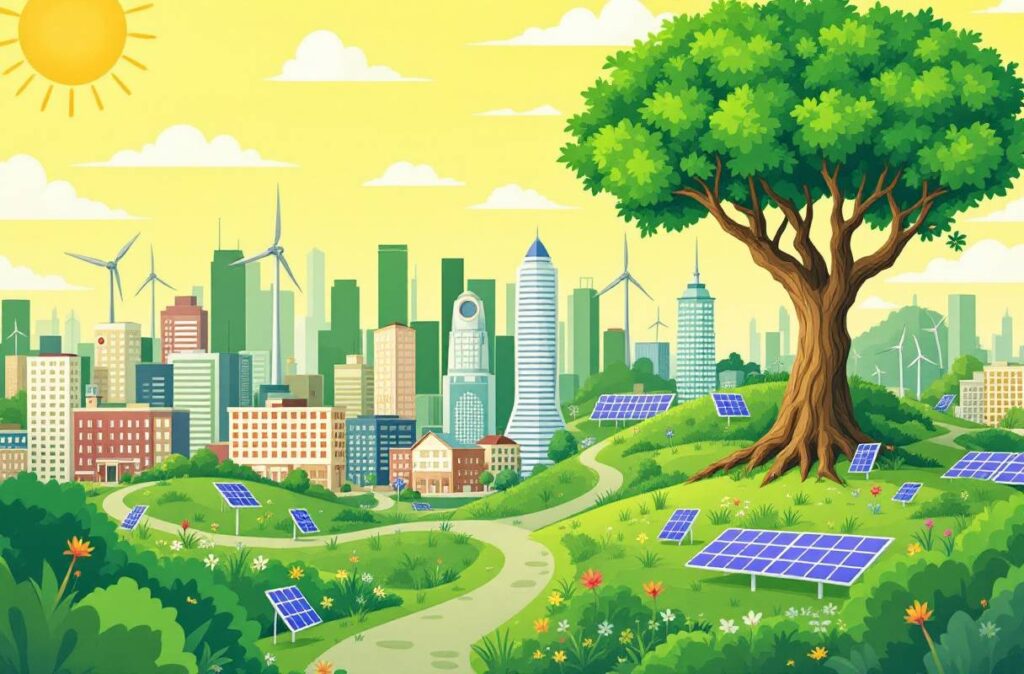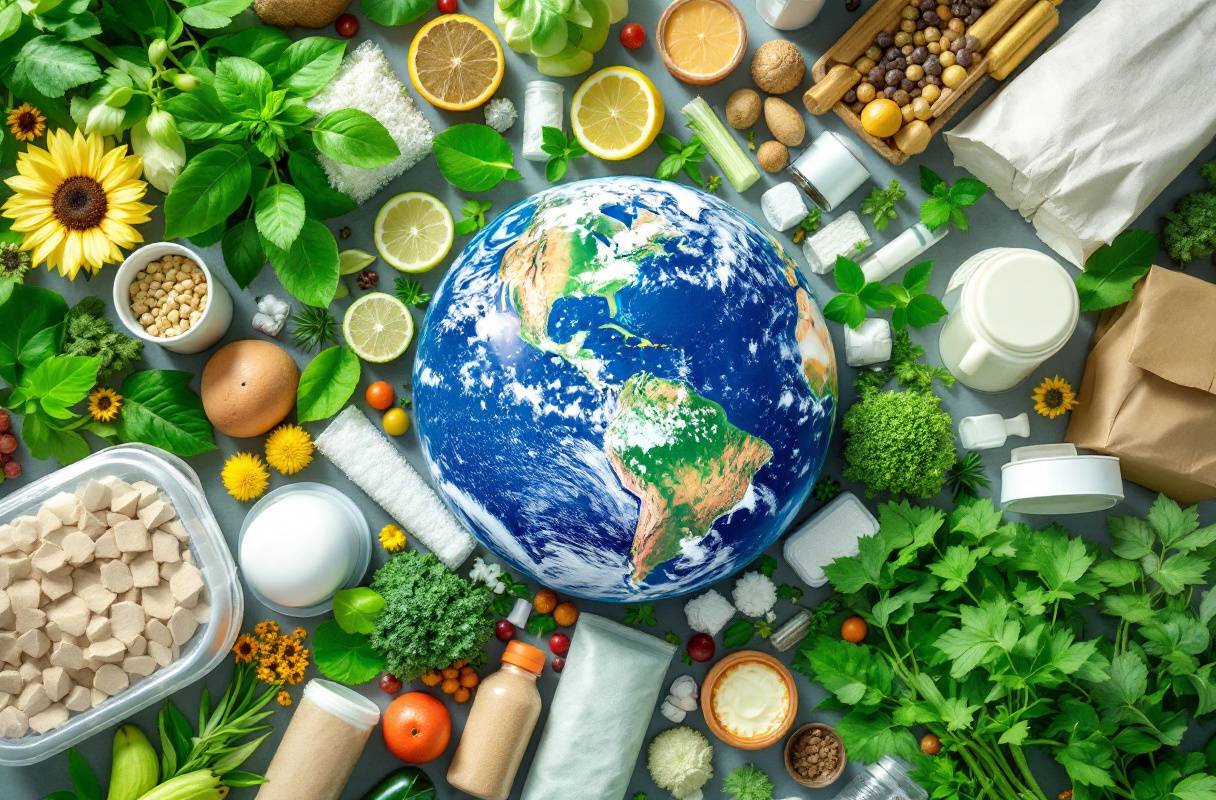In a world where sustainability isn’t just a buzzword but a necessity, eco-friendly packaging emerges as a game-changer for brands aiming to make a positive impact.
Imagine your products wrapped not just in materials that protect them but also in a commitment to preserving our planet.
Dive into the transformative world of eco-friendly packaging solutions and discover how your brand can lead the charge towards a greener, more responsible future.
The Drive Towards Sustainability

Importance of Eco-Friendly Packaging
Eco-friendly packaging is becoming a big deal as our planet faces serious threats like climate change, pollution, and running out of resources. More folks and businesses are catching on, opting for greener ways to wrap things up. Switching to eco-friendly packaging cuts down on trash saves precious resources, and lightens our ecological footprint.
Brands that hop on the green train are finding favor with consumers. It’s not just about hugging trees; it’s good for business too. Going green with your packaging sends a message that you’re responsible and ahead of the curve.
Current Challenges in Packaging Sustainability
But let’s talk about the hurdles. Going green isn’t all sunshine and daisies. For starters, eco-friendly materials often hit businesses in the wallet more than the regular stuff. Not every company has the bucks to make that leap.
Then there’s the recycling and composting hiccup. Plenty of places just don’t have the facilities to handle eco-friendly waste properly. If you can’t process the waste, then using biodegradable packaging doesn’t do much good.
Innovation? Still chugging along. Sure, we’ve got cool stuff like plant-based plastics and edible packaging, but they’re still getting polished and might not fit every product yet.
| Challenge | Description | Impact |
|---|---|---|
| Cost | Sustainable materials come with a higher price tag | Strain on business budgets |
| Infrastructure | Few places have the setup for proper recycling/composting | Sluggish waste processing |
| Innovation | New tech needs time to mature | Not ready for everything under the sun |
Folks from all walks—businesses, governments, brainiacs—are hustling to crack these nuts. Dig deeper into how eco-friendly moves are shaking up various sectors with our pieces on eco-friendly building materials and vertical farming technology.
Eco-Friendly Packaging Solutions
Sustainability is all the rage, and eco-friendly packaging is leading the charge. Customers aren’t just picky about price anymore—they want to save the planet, too. Let’s break down some smart green packaging picks.
Biodegradable Materials
These materials are the Good Samaritans of packaging—they take one for the team by naturally disintegrating. Made mostly from plants, they leave zero toxic messes behind.
| Biodegradable Material | Time to Decompose |
|---|---|
| Cornstarch Packaging | 2-6 months |
| Mushroom Packaging | 30-60 days |
| Seaweed Packaging | 4-6 weeks |
Compostable Packaging
Compostable stuff is like biodegradable’s overachieving sibling. It not only disappears but also turns into plant food. Certified to morph into compost, these goodies boost soil and cut down on waste.
| Compostable Material | Time to Compost |
|---|---|
| PLA (Polylactic Acid) | 3-6 months |
| Bagasse (sugarcane fiber) | 60-90 days |
| Paper Pulp | 2-4 weeks |
Recycled Content Packaging
Instead of starting from scratch, recycled content packaging gets a head start. It uses bits and bobs from old materials, tapping into a cycle that saves energy and raw resources.
| Packaging Material | Recycled Content Percentage |
|---|---|
| Recycled Plastic PET | Up to 100% |
| Recycled Paper | 30-100% |
| Recycled Aluminum | 100% |
Reusable and Refillable Packaging
These containers are the gift that keeps on giving. They cut down on waste by sticking around for multiple rounds before hitting the trash can. This is making waves in cosmetics and around the house, where refilling beats rebuying.
| Packaging Type | Average Lifespan (Uses) |
|---|---|
| Glass Containers | 20-50 uses |
| Metal Tins | 15-30 uses |
| Silicone Pouches | 10-25 uses |
Choosing eco-friendly packaging nudges us toward a cleaner, greener future. By jumping on this trend, businesses keep up with eco-minded customers, tick the regulatory boxes, and give Mother Earth a well-deserved break. Craving more sustainable smarts? Check out our pieces on bioplastics innovations and circular economy technology.
Innovations in Green Packaging
Going green is trending—and it’s not just about the veggies on your plate. Packaging is getting a makeover too, with some clever tricks up its sleeve to help us take care of Mother Earth. Let’s talk about three ways packaging is getting its eco-friendly groove: plant-based plastics, edible packaging, and smart packaging technologies. These aren’t just fancy words; they’re doing something good for the planet and helping companies and shoppers in lots of ways.
Plant-Based Plastics
Ever heard of plastics that come from plants instead of oil? These bioplastics are crafted from stuff like corn, sugarcane, and even wood pulp. Why’s that important? Because it means less drilling for oil and fewer factory smokestacks puffing out nasty gases.
Bioplastics act just like the regular plastic we know, so they’re great for all kinds of uses, like wrapping up your lunch or making spoons. They get tested to make sure they work just as well—or better—than the old-style plastic.
| Material Source | CO2 Emissions Reduction (%) |
|---|---|
| Corn Starch | 20-30 |
| Sugarcane | 60-70 |
| Cellulose | 40-50 |
If you’re curious about how these plant-made wonders work, swing by our piece on bioplastics innovations.
Edible Packaging
Imagine munching on the wrapper of your candy bar instead of just tossing it. Edible packaging does just that, turning things like seaweed, rice, or potato starch into part of the meal. No more trash—just tasty tidbits!
This type of packaging shines in the food world, wrapping up snacks, sauces, and sweets. It’s the cool kid on the block because it’s safe and comes without the worry of harmful chemicals.
- Seaweed-based packaging
- Rice paper wraps
- Potato starch films
Phoning into the food scene? Peek at some sustainable food industry technologies while you’re at it.
Smart Packaging Technologies
Think of your package as your personal assistant. That’s what smart packaging is all about, offering high-tech features like tracking your food and knowing when it’s past its prime. This helps cut down on waste and keeps things fresh in the supply chain.
Here’s what’s happening in smart packaging:
- RFID Tags: Keep a close eye on inventory, keeping the waste down.
- Freshness Sensors: Want to know if your food’s still good? These gadgets have got you covered.
- Active Packaging: Does a bit of magic to help food last longer, like tricks that soak up oxygen.
Some systems even come with nifty energy-saving gadgets to keep things green. Check out the future of power-saving in smart energy saving devices.
By hopping on these innovations, companies can pump up their green game, meeting the increasing call for eco-friendly options, and shrinking their carbon footprint.
Benefits of Eco-Friendly Packaging
Eco-friendly packaging is a win-win for Mother Earth and savvy businesses alike. Here’s a breakdown on how it can impact the planet, change how people see your brand, and maybe even save you some dollars in the long run.
Environmental Impact
Going green with packaging makes a huge difference. When businesses use biodegradable, compostable, or recycled materials, they cut down on waste overflow and preserve the planet’s precious resources. It’s also a step toward slashing those pesky carbon emissions and making a lighter dent on our planet.
| Earth-Friendly Win | How Much It Helps |
|---|---|
| Fewer Carbon Emissions | 30% less |
| Less Plastic Waste | 60% less |
| Resource Savings | 50% saved |
Check out how you can also go green with energy in our renewable energy basics.
Consumer Perception
How people see your brand can make or break you, especially when it comes to sustainability. More folks are looking for brands that care about the planet. When you jump on the eco-friendly bandwagon, customer loyalty can skyrocket, and satisfaction levels hit the roof.
Research tells us:
- 75% of people will ditch their go-to brand for one that’s planet-friendly.
- 71% of buyers lean toward companies with green packaging.
- 63% say they’ll splash out more cash for products in earth-friendly wraps.
These numbers show why it’s smart to go green if you want trust and a sparkling brand image.
Cost-Effectiveness
Sure, making the switch to eco-packaging might seem pricey at first, but down the road, it pays off. With less waste management headaches and maybe some tax breaks, plus a potential boost in loyalty, it could really up your bottom line.
| Comparing the Costs | Old School Packaging | Earth-Friendly Packaging |
|---|---|---|
| Setup Cost | $100,000 | $120,000 |
| Yearly Waste Cost | $15,000 | $5,000 |
| Tax Benefits | None | $10,000 |
| Loyalty Boost | 5% | 20% |
When you look at the bigger picture, going green with your packaging makes both eco and fiscal sense for your business in the future.
Want to join forces in reducing e-waste too? Dive into our insights on e-waste management solutions. By switching to greener packaging, businesses can step up for a cleaner planet while reaping financial perks.
Implementing Eco-Friendly Packaging

Switching to packaging that’s kind to the planet means thinking through a bunch of stuff and taking some solid steps to make sure it all goes off without a hitch. You gotta tackle those challenges head-on to make it work seamlessly.
Considerations for Businesses
When shifting to sustainable packaging, businesses gotta keep a bunch of things in mind:
- Material Availability: Find eco-materials that are easy to come by—don’t want to run out, right?
- Cost Analysis: Crunch the numbers to see what going green does to the budget.
- Functionality: Make sure the new stuff doesn’t fall apart when shipped or handled.
- Regulatory Compliance: Keep your packaging in line with all the rules, both at home and abroad.
Overcoming Roadblocks
Switching to greener packaging often brings its own set of headaches, like money issues, not enough materials, or folks being stuck in their old ways. Getting over these humps needs some savvy planning and bringing people together.
- Financial Constraints:
- Balance the upfront costs with what you’ll save later.
- Hunt down any financial perks tied to going green.
- Material Limitations:
- Work with suppliers to cook up new solutions or find other materials.
- Mix it up with recyclable, compostable, and reusable options.
- Resistance to Change:
- School your team on why eco packaging rocks—spell out the perks.
- Get your customers in on the action by showing them the eco-win.
Steps for Transitioning to Sustainable Packaging
Here’s a quick guide to making the switch:
- Assessment and Planning:
- Take a good hard look at your current packaging and find where you can step it up.
- Set some down-to-earth goals and timelines to move forward.
- Research and Development:
- Dive into biodegradable materials to see what fits your products best.
- Whip up some prototypes and put ’em through the wringer.
- Supplier Collaboration:
- Link up with suppliers who care about the planet as much as you do.
- Smooth out deals that align with your green ambitions.
- Employee Training and Engagement:
- Get your crew up to speed on handling new materials and why they matter.
- Let ’em in on the big decisions to get their buy-in and support.
- Consumer Communication:
- Shout out your packaging switch to customers, making sure they see the planet bonus.
- Point out the eco-benefits and any bang for the buck it brings.
- Monitoring and Improvement:
- Keep tabs on how the new packaging holds up with regular check-ins.
- Tweak things based on what you hear from feedback and performance stats.
Businesses that follow these plans can flip the switch to eco-friendly packaging without rocking the boat too much while making the most out of it. Want to keep the green train chugging along? Check out more cool ideas like smart energy saving devices and vertical farming technology to keep boosting your sustainable game.
Conclusion
Embracing eco-friendly packaging isn’t just a trend—it’s a pivotal step towards safeguarding our planet and elevating your brand’s reputation. From overcoming initial costs and infrastructure challenges to leveraging innovative materials and smart technologies, the journey to sustainable packaging is both rewarding and essential.
By adopting these green solutions, businesses not only reduce their environmental footprint but also resonate with conscious consumers, paving the way for a prosperous and sustainable future. Empower your brand today with eco-friendly packaging and join the movement towards a greener tomorrow.
Resources
- Sustainable Packaging Coalition – Comprehensive resources on sustainable packaging practices and innovations.
- Environmental Protection Agency (EPA) – Sustainable Management of Materials – Official guidelines and information on sustainable materials management.
- The Ellen MacArthur Foundation – Circular Economy – Insights on circular economy practices and sustainable packaging.
FAQs
What are the main benefits of using eco-friendly packaging?
Eco-friendly packaging reduces environmental impact, enhances brand reputation, attracts conscious consumers, and can lead to long-term cost savings through reduced waste management costs and potential tax benefits.
What challenges do businesses face when switching to sustainable packaging?
Businesses often encounter higher initial costs for sustainable materials, limited availability of eco-friendly resources, inadequate recycling and composting infrastructure, and resistance to change within the organization.
What types of eco-friendly packaging materials are available?
Options include biodegradable materials like cornstarch and mushroom packaging, compostable materials such as PLA and bagasse, recycled content packaging using recycled plastics and papers, and reusable packaging like glass containers and metal tins.
How can businesses overcome the financial constraints of adopting eco-friendly packaging?
Businesses can balance upfront costs with long-term savings, seek financial incentives or tax breaks for sustainable practices, collaborate with suppliers for cost-effective solutions, and highlight the potential for increased customer loyalty and brand value.
What are some innovations in green packaging?
Innovations include plant-based plastics derived from renewable resources, edible packaging made from seaweed or rice, and smart packaging technologies like RFID tags and freshness sensors that enhance functionality and sustainability.




















